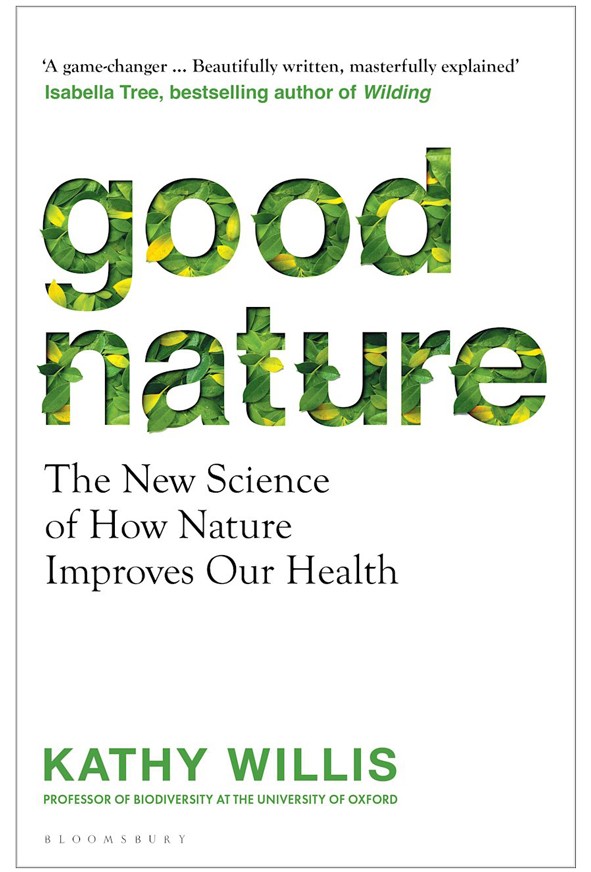
Good Nature
Kathy Willis Bloomsbury (2024)
Trained as a palaeoecologist to analyse plant fossils, Kathy Willis began to study living plants only when she became director of science at London’s Royal Botanic Gardens, Kew, in 2013. There, she observed visitors stopping next to plants “to inhale their fragrances, bask in their shade, or reach out to touch leaves or stroke bark”.
A 1984 scientific paper revealed to her that people recover from gallbladder surgery faster in hospital wards that have a view of trees than those that look out onto brick walls (R. S. Ulrich Science 224, 420–421; 1984). Tree observers required fewer doses of pain-relief drugs than did wall watchers. Such benefits have long been recognized culturally. For example, the Buddha’s religious teachings encourage meditation in woods and forests.
Fascinated, Willis unearthed many large data studies that show the relationship between plants and human health. A US survey incorporating satellite data, for instance, shows that the loss of 100 million trees from urban streets in the 2000s was associated with more than 21,000 extra human deaths from respiratory illnesses and cardiovascular disease than expected for that period (G. H. Donovan et al. Am. J. Prev. Med. 44, 139–145; 2013).
She began to do “forensic work” to grasp “how we are physically and mentally affected when our senses of sight, sound, smell and touch interact with nature”. As her inspiring book concludes: “We cannot survive without a diverse nature around us.”
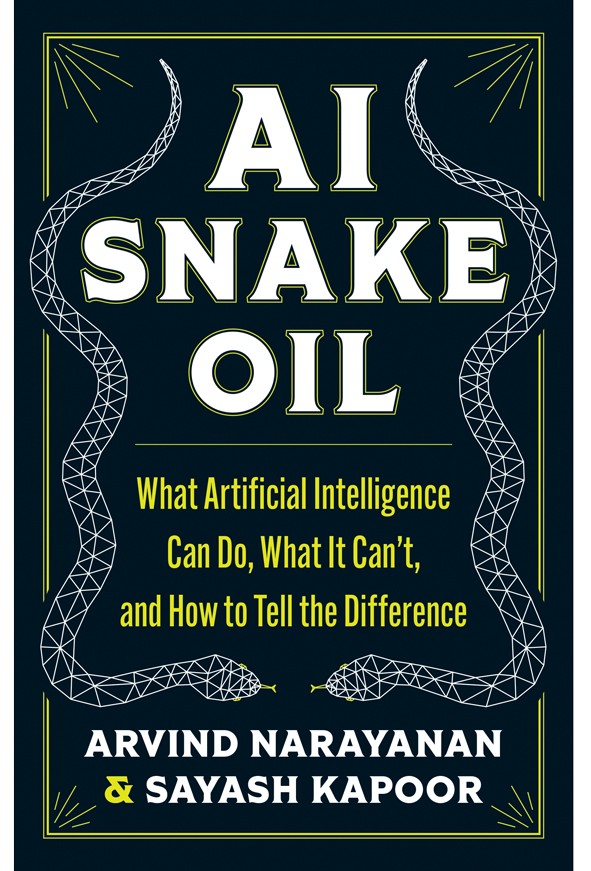
AI Snake Oil
Arvind Narayanan & Sayash Kapoor Princeton Univ. Press (2024)
Imagine a world, suggest computer scientists Arvind Narayanan and Sayash Kapoor, with only one word for transport: ‘vehicle’, which covers cars, buses, bicycles, spacecraft and every means of travelling. Questions about how fast vehicles go or how environmentally friendly they are would be meaningless. It’s easy to see how scams could develop as fraudsters manipulate confused consumers.
Now replace the word ‘vehicle’ with ‘artificial intelligence’ (AI), the authors continue, “and we have a pretty good description of the world we live in”. AI covers a wide range of loosely affiliated technologies, but each works differently and has distinct applications. Although progress in AI is remarkable, so is its potential for misuse.
Researchers, companies and the media all contribute to AI’s “misinformation, misunderstanding, and mythology”, Narayanan and Kapoor find in their well-researched book — one of the best on this controversial subject. Sometimes there is deliberate hype: companies promise benefits that AI can’t (yet) deliver, similar to the sale of ‘snake oil’ as a miracle cure.
The book analyses generative AI models such as chatbots; predictive AI systems, which Narayanan and Kapoor maintain “will likely never work”; and content-moderation tools, including those used for Facebook. The authors criticize companies for training the algorithms on the work of writers, artists and photographers without giving due credit or compensation.
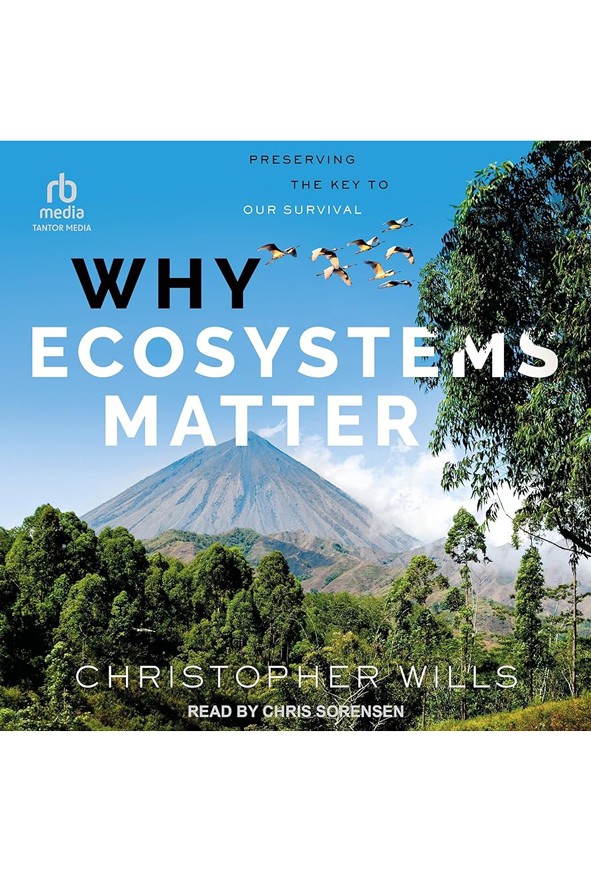
Why Ecosystems Matter
Christopher Wills Oxford Univ. Press (2024)
While descending a steep, winding road from the grasslands of Peru’s eastern Andes to the forests below, biologist Christopher Wills found that the region’s trees, birds and insects seemed to change drastically with each drop of 200–300 metres, despite their exposure to only small variations in temperature, rainfall, humidity and sunshine. This tantalizing observation was confirmed when he read a detailed survey of the road he walked, published by an international collaboration of scientists the year before his trip.
He is reminded of Charles Darwin’s puzzlement over the distinct beaks that finches on neighbouring Galapagos islands had, despite each island sharing a similar climate — an observation that led to the theory of evolution. “It is interesting to contemplate an entangled bank,” writes Darwin in the final paragraph of On the Origin of Species (1859), “and to reflect that these elaborately constructed forms, so different from each other, … have all been produced by laws acting around us.”
Wills’s pulsating book, ranging from South America to Asia’s Gobi Desert and the depths of the oceans, draws on genetics to disentangle today’s entangled banks — the inextricable links between all living beings — and to expand on Darwin’s understanding of evolution. He argues that “every one of Earth’s teeming ecosystems is a kind of evolutionary cauldron”, bubbling with “new mutational changes”, some of which “can take an entire ecosystem — and occasionally the entire planet — in an utterly new direction”.
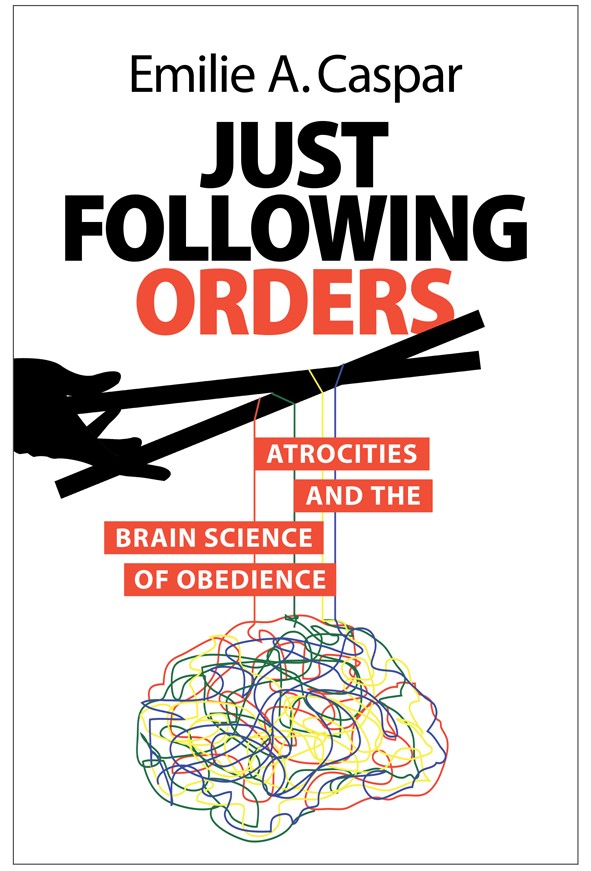
Just Following Orders
Emilie A. Caspar Cambridge Univ. Press (2024)
As a neuroscientist studying obedience, over the past eight years, Emilie Caspar has given 45,000 orders to others to apply a real, painful electric shock to someone else, inspired by the notorious 1960s fake-shock experiments done by psychologist Stanley Milgram. Only about 3% refused her order “to hurt another person”, and even they sometimes agreed on another occasion. She quotes historian and Second World War veteran Howard Zinn’s comment in 1997: “Historically, the most terrible things — war, genocide, and slavery — have resulted not from disobedience, but from obedience.”
In the twentieth century, 262 million people are estimated to have been “murdered by governments via genocide, massacres, mass murders, and intentional famines”, Caspar notes in her absorbing appraisal of such atrocities. She interviews perpetrators of atrocities in the 1970s in Cambodia and in 1994 in Rwanda: a deeply demanding task. More-recent genocides are “largely denied” by governments, making such interviews “almost impossible”.
Perpetrators’ most common explanation for their actions is that they were following orders. She discovers that people who dole out pain to others at her instruction show lower activity in pain-related brain regions than do those who act freely and cause pain voluntarily. The obedient brain does not “process the information as it should”, the author concludes.
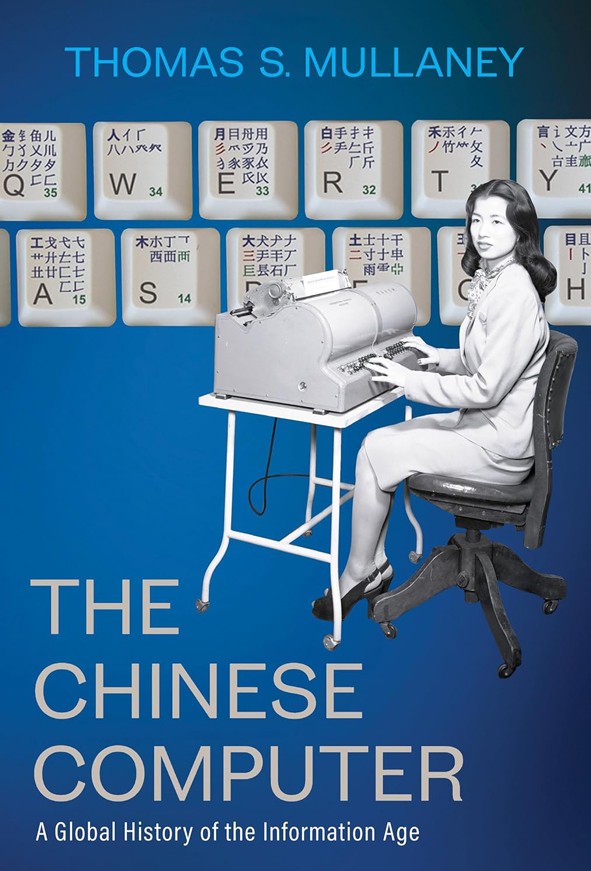
The Chinese Computer
Thomas S. Mullaney MIT Press (2024)
Zhi Bingyi earned a physics PhD in Germany, returned to China in 1946 and led a distinguished career as an engineer before being jailed in a cowshed during China’s Cultural Revolution, which started in the 1960s. With only a stolen pen and the lid of a ceramic teacup as a wipeable writing surface, he invented a way to input Chinese characters into computers by mapping them onto an alphabetic code. Eventually, in 1978, his breakthrough was hailed on a Shanghai newspaper’s front page: “The Chinese script has entered the computing machine.”
He is naturally a key figure in sinologist Thomas Mullaney’s pioneering book. More than half of the global population write in a script unsuited to the standard QWERTY keyboard. Chinese script is particularly challenging, having a writing convention (orthography) that involves thousands of characters and no alphabet. Nevertheless, Chinese computers have adapted to using QWERTY keyboards through complex workarounds, such as ‘hypographs’ — a term coined by Mullaney to describe a class of writing, in which pressing a specific sequence of keyboard letters generates a specific character.
His telling of the unfamiliar history of how China’s hypographic computing developed, starting in the late nineteenth century with a concise ‘telegraph code’ to transmit messages, is fascinating and mind-boggling. Using QWERTY keyboards to write in Chinese, “what you type is never what you get”.
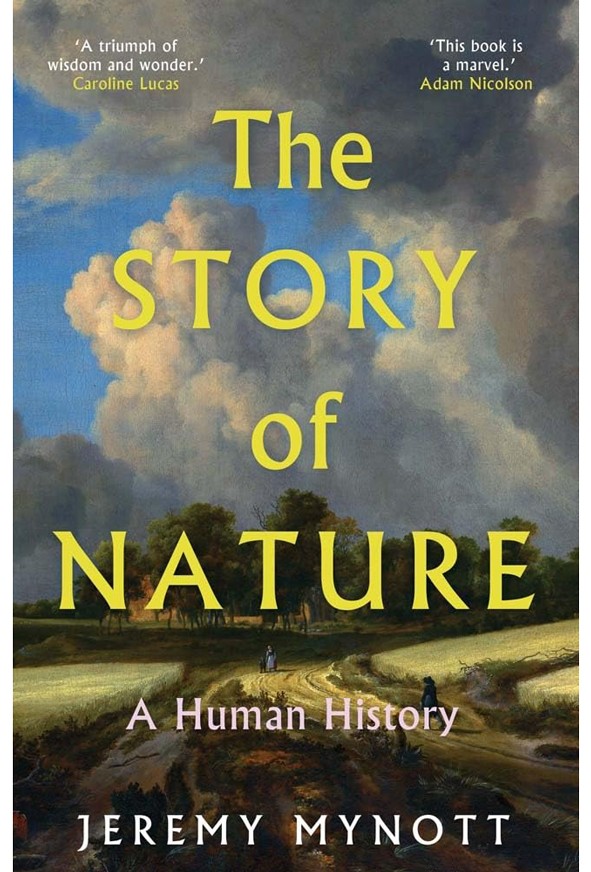
The Story of Nature
Jeremy Mynott Yale Univ. Press (2024)
In classical Greece, philosopher Socrates famously went around Athens asking specialists penetrating questions about how to define key concepts in their fields, quizzing politicians on ‘justice’ and poets on ‘creativity’, for instance.
Jeremy Mynott, author of books on birds and nature, imagines Socrates challenging a physicist-cum-author to define ‘nature’. Does it include human behaviour, as in ‘human nature’, such as the arts, politics and education? Not really, replies the physicist — that is culture. So, nature includes “the objects of your science but not its practice?” pursues Socrates. Still no closer. Then, as now, Mynott concludes, pinning down a simple definition of nature was no easy task.
The author’s lively, well-illustrated tour of an immensely diverse subject — nature’s human history — is illustrated with artistic images of nature, such as the portrait of Isaac Newton obsessed with measurement by poet and painter William Blake. Should people think of themselves as “observers, participants, managers, beneficiaries or custodians” of nature, Mynott ponders. Beginning with prehistoric cave painters, then considering agriculturalists, classicists, medievalists, romantics, rationalists and conservationists, the book ends with climate change and the future. It concludes: “Nature is a very complex term with several current senses, which have themselves evolved and changed over time.”
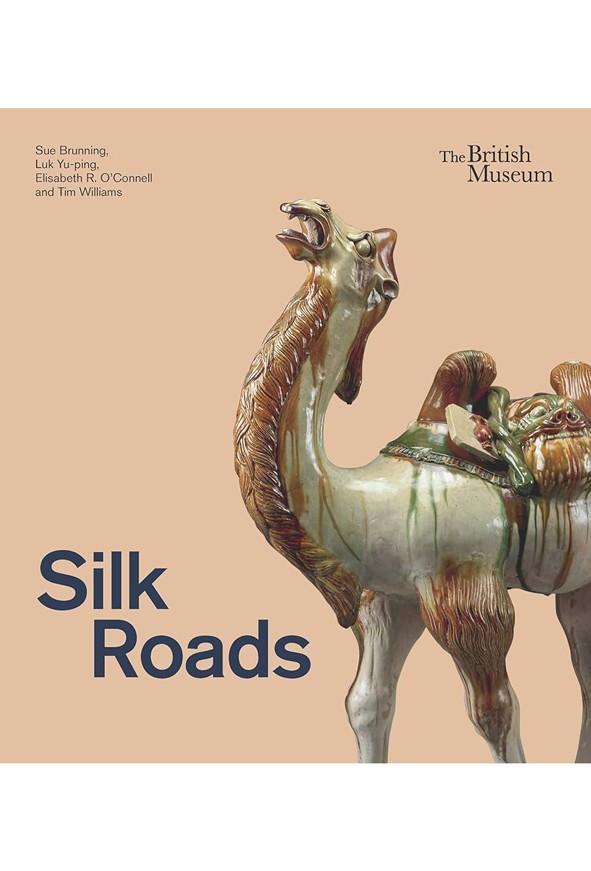
Silk Roads
Sue Brunning et al. British Museum Press (2024)
Between 1271 and 1275, Italian explorer Marco Polo famously made an overland journey from Europe to China. In 1877, the route was dubbed the Silk Road by German geographer Ferdinand von Richthofen, referencing the goods and ideas ferried between civilizations along the ancient caravan path.
In reality, there was not one but many routes. The rich diversity of trade along these paths is revealed in Silk Roads — a lavishly illustrated and informative volume produced to accompany an exhibition at the British Museum in London that runs until 23 February 2025. The book is written by three curators of early medieval European, Central Asian and Byzantine collections, and a Silk Roads archaeologist.
Many of the objects are enigmatic. For example, a Buddha figure, excavated in Sweden at a site dating to around ad 800, was probably created in Pakistan two centuries earlier. No one knows how the figure reached Europe or its relevance there. And several pieces of cloisonné metalwork, including an intricate gold sword-scabbard button, from the seventh-century Sutton Hoo ship burial in England contain garnets from India.
As the authors admit, it is “impossible to capture the full extent and complexity of the Silk Roads in a single publication” — even by deliberately limiting the time frame to ad 500–1000, rather than covering more than a millennium, as historians usually do.
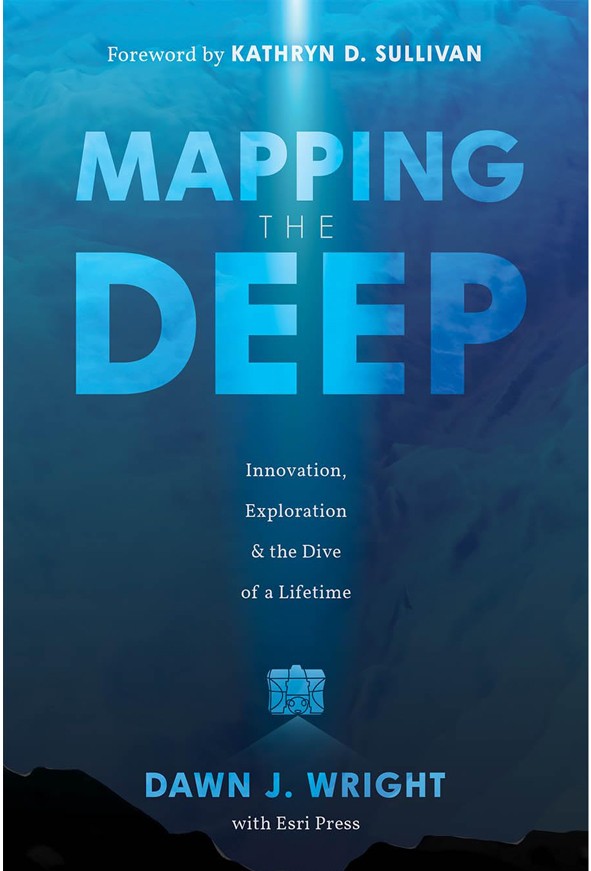
Mapping the Deep
Dawn J. Wright et al. Esri (2024)
When Dawn Wright submitted her master’s thesis in the 1980s — a geophysical survey of the Pacific Ocean’s Tonga Trench using sea-floor data collected by others — it was grudgingly approved. But her professor advised her afterwards that she had no future in oceanography and should consider a non-scientific profession.
Devastated, she nevertheless applied to be a marine technician at the Ocean Drilling Program, and was successful. Today, she is a distinguished oceanographer and chief scientist at Esri, a software company in Redlands, California, renowned for creating geographical information systems.






